Similar titles: The Moving Image
-
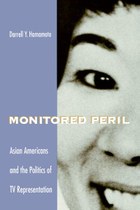 Monitored Peril
Asian Americans and the Politics of TV Representation
Darrell Y. Hamamoto
1994 Fall
Monitored Peril
Asian Americans and the Politics of TV Representation
Darrell Y. Hamamoto
1994 Fall
- The first major study of Asian American representation on U.S. television.
-
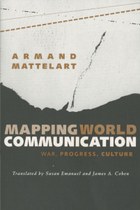 Mapping World Communication
War, Progress, Culture
Armand Mattelart
1994 Fall
Mapping World Communication
War, Progress, Culture
Armand Mattelart
1994 Fall
- A distinguished media theorist exposes the connection between militarism and the evolution of the media industry.
-
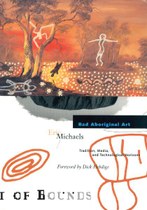 Bad Aboriginal Art
Tradition, Media, and Technological Horizons
Eric Michaels
1993 Fall
Bad Aboriginal Art
Tradition, Media, and Technological Horizons
Eric Michaels
1993 Fall
- This is the account of the author‘s period of residence and work with the Walpiri Aborigines of western Central Australia, where he studied the impact of television on these remote communities. Sharp, exact, and unrelentingly honest, this volume records with an extraordinary combination of distance and immersion the intervention of technology into a remote Aboriginal community and that community’s forays into broadcasting.
-
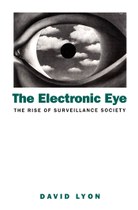 The Electronic Eye
The Rise of Surveillance Society
David Lyon
1994 Spring
The Electronic Eye
The Rise of Surveillance Society
David Lyon
1994 Spring
- Lyon looks into our mediated way of life, where every transaction and phone call, border crossing, vote, and application registers in some computer, to show how electronic surveillance influences social order in our day.
-
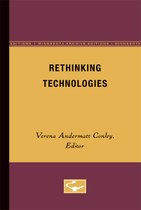 Rethinking Technologies
Verena Andermatt Conley, Editor
1993 Fall
Rethinking Technologies
Verena Andermatt Conley, Editor
1993 Fall
- Grounded on the assumption that the relationship between the arts and the sciences is dictated by technology, the essays in Rethinking Technologies explore trends in contemporary thought that have been changing our awareness of science, technology, and the arts. Contributors: Teresa Brennan, Patrick Clancy, Verena Andermatt Conley, Scott Durham, Thierry de Duve, Françoise Gaillard, Félix Guattari, N. Katherine Hayles, Alberto Moreiras, Jean-Luc Nancy, Avital Ronell, Ingrid Scheibler, and Paul Virilio.
-
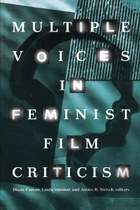 Multiple Voices in Feminist Film Criticism
Diane Carson and Janice R. Welsch, Editors
1994 Spring
Multiple Voices in Feminist Film Criticism
Diane Carson and Janice R. Welsch, Editors
1994 Spring
- Collecting some of the most important writings in feminist film criticism and theory past and present, this volume offers readers a comprehensive survey of the rich and varied contributions feminist scholars have been making to film study over the past two decades. Includes essays by B. Ruby Rich, Teresa de Lauretis, Janet Staiger, Beverle Houston, Chris Straayer, bell hooks, Linda Williams, and Julia Lesage, among others.
-
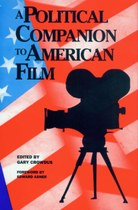 A Political Companion to American Film
Gary Crowdus, Editor
None None
A Political Companion to American Film
Gary Crowdus, Editor
None None
-
 The Branded Eye
Buñuel's Un Chien andalou
Jenaro Talens
1993 Fall
The Branded Eye
Buñuel's Un Chien andalou
Jenaro Talens
1993 Fall
- In 1929, Un Chien andalou opened in Paris to a riotous response. People were enraged and disturbed by its shocking content, structure, and narrative form. This innovative study offers a detailed analysis of the film, including its production background, Salvator Dali’s influence in its making, biographical information on Buñuel, and an annotated script of the film, shot-by-shot description, and complete film découpage.
-
 A Course on Aesthetics
Renato Barilli
1993 Fall
A Course on Aesthetics
Renato Barilli
1993 Fall
- Written in an elegant and clear style, Barilli’s text explores the basic inherent structures of human thought about the classification and evaluation of the arts. This work offers a broad perspective on current scholarship without favoring any one particular school, discipline, or ideology.
-
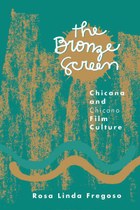 The Bronze Screen
Chicana and Chicano Film Culture
Rosa Linda Fregoso
1993 Fall
The Bronze Screen
Chicana and Chicano Film Culture
Rosa Linda Fregoso
1993 Fall
- Explores Chicana and Chicano popular culture through contemporary representations in both Hollywood commercial and independent cinema.
-
 Contested Closets
The Politics and Ethics of Outing
Larry Gross
1993 Fall
Contested Closets
The Politics and Ethics of Outing
Larry Gross
1993 Fall
- A landmark exploration of the practice of revealing a public figure’s hidden homosexuality through the controversial practice of outing. “Combines a powerfully argued essay with a comprehensive anthology of articles to create an invaluable document on ‘outing.’ Gross’s fearless and fascinating book calls persuasively for ending a code of silence that has long served hypocrisy and double-standard morality at the expense of truth.” --Martin Duberman “This is a valuable contribution to the ongoing debate among journalists and gay activists over ‘outing.’ . . . Gross is a defender of the controversial practice, but one of the greatest strengths of this book is the evenhandedness with which he presents the arguments of each side. He argues that outing is a practice with ‘a long past, if only a short history,’ and spends much of the book’s first half putting it into a historical context. In the course of doing so, he discusses the nature and construction of gay identity and a history of the outing controversies of the past ten years. Gross is a lucid writer who makes a difficult case well. . . . The second half of the book is a collection of key texts in the debate on outing-including several by Michelangelo Signorile, the foremost journalistic proponent of the practice.” --Publishers Weekly
-
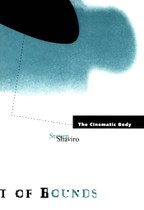 The Cinematic Body
Steven Shaviro
1993 Spring
The Cinematic Body
Steven Shaviro
1993 Spring
- Moving between Jerry Lewis and Andy Warhol, between Fassbinder’s gay sex icons and George Romero’s flesh-eating zombies, Shaviro radically critiques the Lacanian model currently popular in film theory and film studies, arguing against that model’s obsessive emphasis on the phallus, castration anxiety, sadistic mastery, ideology, and the structure of the signifier. Shaviro also explores issues of popular culture, postmodernism, the politics of the body, the construction of masculinity and of homo/heterosexualities, the nature and uses of pornography, and the aesthetics of masochism. “Invokes and evokes the force and sensation of film from within a Deleuze-Guattarian perspective. . . . well-written, elegant, and eloquent.” --Dana Polan
-
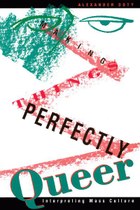 Making Things Perfectly Queer
Interpreting Mass Culture
Alexander Doty
1993 Spring
Making Things Perfectly Queer
Interpreting Mass Culture
Alexander Doty
1993 Spring
- Doty demonstrates how queer readings can be—and are—performed by examining star images like Jack Benny and Pee-wee Herman, women-centered sitcoms like Laverne and Shirley and Designing Women, film directors like George Cukor and Dorothy Arzner, and genres like the musical.
-
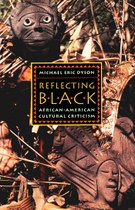 Reflecting Black
African-American Cultural Criticism
Michael Eric Dyson
1993 Spring
Reflecting Black
African-American Cultural Criticism
Michael Eric Dyson
1993 Spring
- From rap music to preaching, from Toni Morrison to Leonard Jeffries, from Michael Jackson to Michael Jordan, Reflecting Black explores as never before the varied and complex dimensions of African-American culture through personal reflection, expository journalism, scholarly investigation and even homily.
-
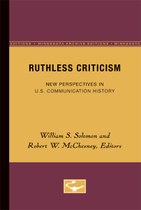 Ruthless Criticism
New Perspectives in U.S. Communication History
William S. Solomon and Robert W. McChesney, Editors
1993 Spring
Ruthless Criticism
New Perspectives in U.S. Communication History
William S. Solomon and Robert W. McChesney, Editors
1993 Spring